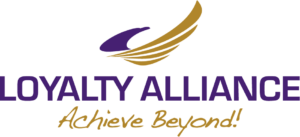As we approach the end of the year, it is a perfect time to reflect on the current year; the accomplishments of your company and your employees; and contemplate your 2024 path to greater success.
One very effective way to take stock of past successes and challenges as well as begin to plan your company’s 2024 initiatives is to do a Strengths, Weaknesses, Opportunities, and Threats (SWOT) Analysis of your company and its functional areas.
In our ongoing organizational challenges survey, 67$ of survey respondents claim to have challenges with SWOT Analyses. Specifically, they indicate these two scenarios as the most prevalent and challenging:
- The company has never done an organizational SWOT analysis and doesn’t know where or how to go about doing this activity.
- SWOT Analyses have been done in the past, but they take too much time from the leadership team, which results in revisiting the SWOT happens less frequently. Something more streamlined that requires less leadership time is needed.
While a traditional SWOT analysis activity suggests capturing a long list of strengths, weaknesses, opportunities, and threats, I suggest that you go against traditional thinking to create a more productive session and output. I typically limit the strengths, weaknesses, opportunities, and threats to no more than four each per small group of people (2-3 max). While there are certainly more items that could go on the list, the reality is that when you begin to act on the information gathered, four action items or initiatives in each area are just about all that a company can handle and act on effectively.
What will limiting your ideas to four per section do to improve the outcome? It forces the group to pick the most important topics. Conversely, when the people are allowed to make an endless inventory of weaknesses, for example, the session can quickly turn into a depressing, nitpicking, morale-lowering experience. By keeping the list short, people can’t lament or rehash topics over and over.
I also find that limiting captured items to five keeps people on task. The session is shorter, more focused, more productive, and more engaging.
Once each group has captured the top four items for S, W, O, and T, it is recommended that they define the benefits or impacts the items have (or could have) on the company or department.
Having the most important items captured (in a workable quantity) and understanding the benefits and impacts on the business will open the door to some exciting dialogue, goal setting, and strategic planning for 2024.
If time allows, a creative way to spark even more dialogue is to have your management team generate a SWOT analysis of the company and then have a group of employees go through the same activity without knowledge of the management’s results. With these two perspectives to compare, discussions get very interesting.
While gathering perspectives/information is valuable, it is only one half of the equation. How you turn your ideas, direction, and strategic initiatives into goals, action items, metrics, and priorities take a planning activity from a one-time event to a strategic guiding tool for the year to come.
Benefits of doing a hyper-focused SWOT Analysis
- Lower costs by aligning perspectives, priorities, and initiatives for the coming year.
- Increase productivity by making sure people are focused on priorities and not wasting time on non-priority tasks.
- Improve morale by showing your employees that you want to learn what they think about the company.
- Develop management by giving them a vehicle for creating a SWOT analysis over and over, as needed.
Best Practices for doing your SWOT Analysis
- Conduct a SWOT Analysis on the company at year-end to effectively position people’s mindsets for the coming year.
- Have different groups submit their own perspectives/versions for comparison and work to close the gaps.
- Use a facilitator from outside the department (or organization) to guide the discussions and help consolidate versions.
- Use the Conversation Framework OVERVIEW- High-Level SWOT Analysis Activity if you do not have a structured framework at your disposal. Watch this video for an explanation of OVERVIEW. OVERVIEW – High-Level SWOT Analysis – Innovative Management Tools
Moving into 2024, I look forward to sharing more information, strategies, and practical tools with you – providing you with innovative management solutions. I would love to hear from you if you have specific topics that you would like to have covered in future posts.
In my next post I will kick off the year with a topic that has started to surface more and more in the media over the last year or so and will continue to pose challenges over the next 5 to 10 years. I call it “The Perfect Storm.”
Happy Holidays, Happy New Year, and until next time!
- Understanding Change Leadership - March 7, 2025
- Top 10 Cognitive Biases Most Commonly Present in Salespeople - February 28, 2025
- Fostering Trust Through 7 Stories - February 21, 2025

